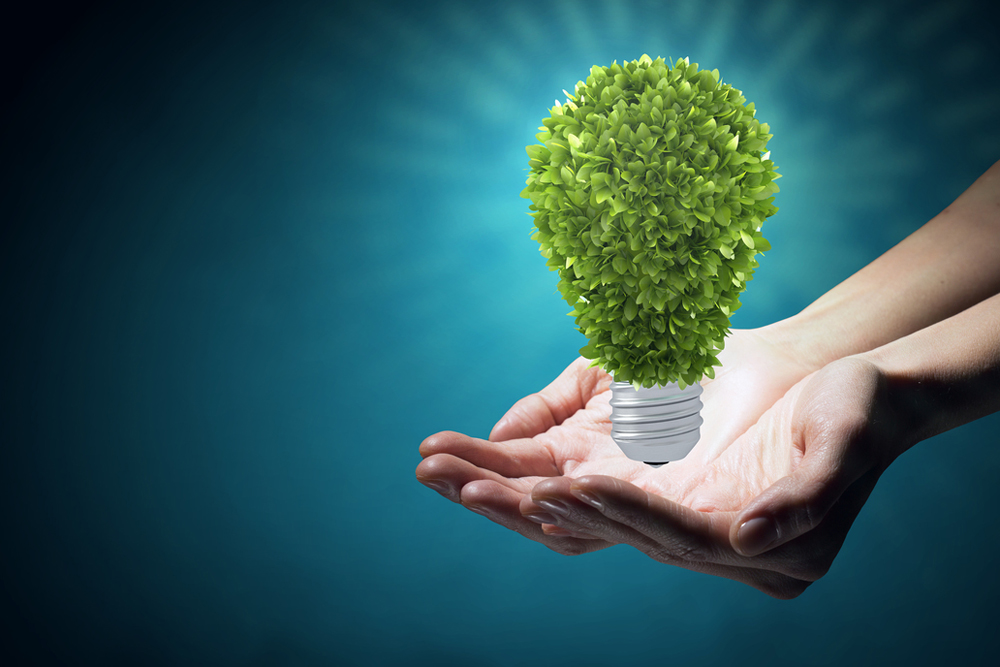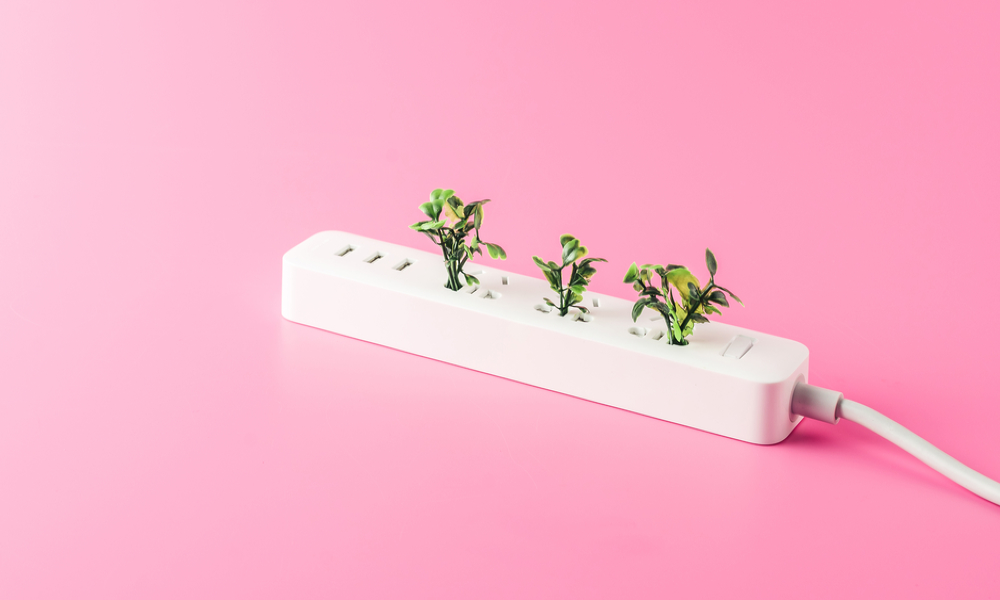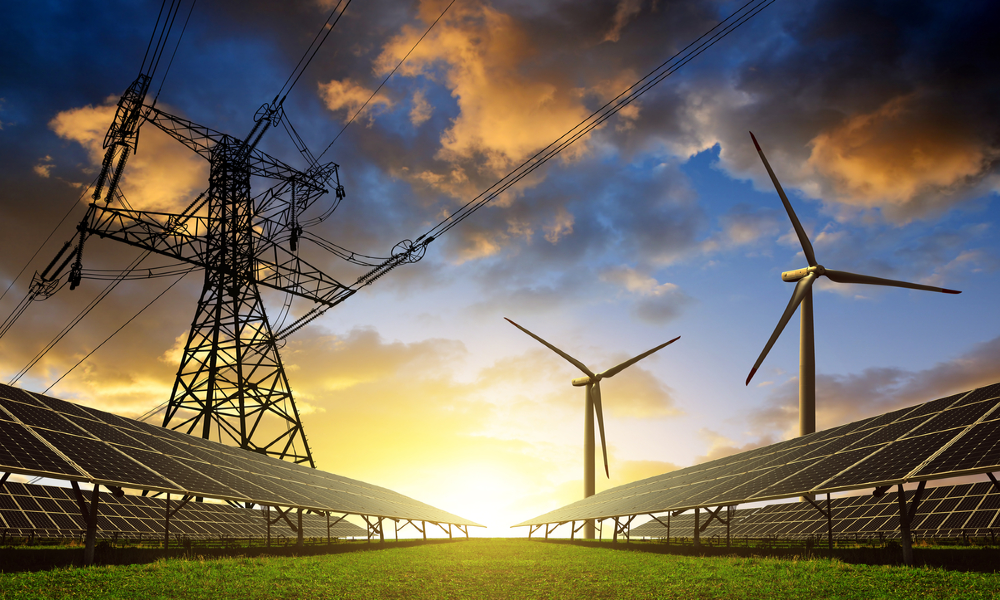Renewable Electric Companies, Delivering Eco-Friendly Power to Your Home

As the climate crisis becomes one of the most discussed topics, the topic of renewable and sustainable energy follows the trend. As the majority of the world’s countries make their own plans on how to decarbonize economies and start to rely less on gas, renewable stocks skyrocket and green companies employ more people than ever.
The price of renewable generators is at its historic minimum, so if you’ve been thinking about making a switch to a new energy supplier, make sure it is a business that cares about the environment as much as you do.
What is Green Energy?
Green Energy, or renewable energy, is a way of producing energy from renewable sources. Wind energy, solar power, hydropower, and many other energy sources are sources of renewable energy. On the other hand, fossil fuels are non-renewable sources. Going green can help you reduce your carbon footprint and mitigate the effects of the climate crisis.
In the US, there is a lot of renewable energy that is produced. Almost every energy company offers one form of green power or another, so choosing renewable energy plans is not easier than ever. With significant investments and a reduction in the prices of solar panels, green tariffs are getting lower and likely to be completely abolished.
Solar
Solar power is the most abundant form of renewable energy. 173,000 terawatts of solar energy strike the earth in a given instance. It is also the cleanest because converting the sun’s power into electricity produces no greenhouse gas emissions.
Solar power comes from the sun’s radiant energy that’s captured by various solar technologies and converted into electricity. Harnessing the power of sunlight can happen in different ways, and the most common of these is with the use of solar or photovoltaic (PV) panels.
Solar panels catch the sun’s rays and turn them into direct current (DC). The solar inverter in the PV system then converts the direct current into alternating current (AC), the kind of electricity that powers our homes.
Solar panels and concentrated solar are getting ever more efficient in producing renewable energy. If you buy your electricity from a green electricity provider, the odds are that you use solar to power your house.
Hydroelectric
Capturing the force coming from flowing water creates hydropower, also known as hydroelectric power. This is typically done using a dam that changes the natural flow of a body of water, such as a river.
As the water moves from one point to another, it produces energy. Machinery, such as water turbines, capture that energy and uses it to generate electricity. That green power then goes into the grid, supplementing the electricity coming from traditional energy sources.
Hydropower is one of the oldest sources of renewable energy and the first hydropower plant was opened in 1882. It is the biggest supplier of electricity from renewable resources until 2019, when wind power surpassed its generated capacity. Around 7% of the nation’s electricity comes from hydropower, and because this renewable relies on the water cycle, it’s a constantly replenishing power supplier.
Hydroelectric is currently the most widespread form of renewable energy source. Many energy companies build their entire energy supply on hydropower. Some states, such as Kansas, produce around 40% of their electricity needs from hydro plants. This is the oldest form of renewable energy that was utilized,
Wind
The wind becomes a renewable energy source when the force created by moving air is captured to produce electricity. Wind turbines make it possible to transform the wind’s kinetic energy into electric power.
Wind turbines were developed over a hundred years ago, and today, wind power is one of the rapidly expanding renewable energy suppliers, generating around 338 billion kWh of green energy in 2020.
Wind energy is one of the cleanest renewables. Unlike coal-driven power plants, wind turbines convert the force harnessed from blowing wind without emitting particulate matter and greenhouse gases that cause smog, acid rain, and upward spirals in the earth’s temperature.
Wind turbines are a part of the Renewable Portfolio Standard in the US which mandates 100% green power be produced in the USA by 2050.
Biomass
Biomass is a renewable organic material that contains stored energy from the sun. The sources include wood and wood processing wastes, animal manure, crops, and biogenic materials, such as cotton, paper, food, and wool products. When processed, these organic matters become a renewable fuel source for transportation, heat, and power.
During the mid-1800s, biomass was a major renewable energy supplier as wood provided for nearly all of the country’s energy needs, like heating, cooking, and lighting. In 2020, biomass accounted for approximately 5% of the nation’s energy use, providing close to 5 quadrillion British thermal units (Btu) of power.
Like wind and solar, biomass is a renewable resource. As such, the supply is almost limitless, and because it produces fewer emissions of greenhouse gases than fossil fuels, it helps reduce the carbon footprint of power generation.
Biomass comes in many shapes and sizes. Biomass pellets or agripellets, aerobic and anaerobic digesters, as well as burning biomass are all viable sources of heat, electricity, and even methane, which can be converted into oil to power your car or burned to produce renewable energy.
Geothermal
Geothermal energy is the heat contained in the rocks and fluids buried deep beneath the earth’s crust. To release the power underneath the surface and use it for energy requires extensive drilling towards the heat source. Wells are dug towards underground reservoirs to get to the steam or hot water, which is then used to run turbines that generate electricity.
Over 20 countries deploy this green power, with the U.S. being the largest producer of this form of renewable electricity.
Along with solar, hydro, and wind power, geothermal energy belongs to the list of renewable sources that produce clean energy for the country. While geothermal energy emits only around one-sixth of the carbon dioxide that comes from a natural gas plant, this renewable source has the potential to produce as much as 2 terawatts of electricity.
Geothermal is one of the more expensive forms of green power. It is also one of the most stable energy forms, as it is always present. Geothermal energy is mostly used for heating in more northern states. Residential customers can use geothermal to heat their houses or barns, as they like.
The Benefits of Green Energy
One of the biggest benefits of going green is that there are no associated pollutants that are released. The whole idea behind ‘green’ is that renewables release no CO, CO2, methane, and many other pollutants associated with more traditional ways to generate electricity. This means less CO2 in the atmosphere and less strain on the planet.
Many energy companies are quick to switch to renewables for yet another benefit: little to no maintenance. In comparison to a thermal plant, a solar plant does not need expensive infrastructure to deliver fuel, no costly maintenance, and very little footprint on the environment.
Many eco-conscious businesses switch to renewable energy to make a positive impact on the environment, save money and be grid-independent. Google, for example, produces a lot of renewable electricity for their needs. Renewable energy can power both businesses and households. California, for example, produces more solar than it can use.
Renewable Energy Credits
Renewable Energy Credits or RECs are a form of a certificate that guarantees that the energy you consume will be replenished with renewable energy in the grid. There is no way of knowing where the energy you use daily comes from physically, so applying for renewable energy plans with your energy suppliers means that they buy renewable energy certificates on your behalf.
This way, you are sure that your appliances leave no harmful CO2 in the atmosphere and that the energy you use is compensated for through renewable sources. There are many renewable energy options, so make sure to understand them the next time you look for new electricity providers.
Any business or company that generates renewable forms of energy can sell these RECs. They are a form of compensation means that is supposed to help renewable sources decarbonize the economy of the country faster than was possible before. The billing for you is the same, but switching to energy generated in a sustainable way means more support for renewable utilities and less headache down the road.
Each REC serves as proof that 1 MW of renewable energy was generated, and along with it comes the environmental benefits that amount of electricity embodies.
When you purchase renewable power, you help promote clean energy, which, in turn, encourages the production of electricity from renewable sources.
RECs make sense for you if you:
- want to support the renewable energy market
- can’t accommodate the installation of solar, wind, or other renewable energy facilities in your home or business
- aim to reduce your home and businesses’ environmental impact
- want to ensure that you get electricity from renewable sources
Switching to Green Energy
Installing a solar array on your rooftop is the best way to go about renewable energy. However, this is not always possible. Depending on the orientation of your house, the tilt of the roof, the state you’re in, and many other factors, installing solar panels may not be a viable solution.
On the other hand, not all US areas have access to renewable electricity. In some cases, the dams are far away and other renewable power sources are not viable in your area. In addition, your area may not have enough wind to make windmills a reasonable solution.
In that case, opting for renewable energy plans is the best solution to make, since electricity providers can buy RECs on your behalf. The electricity you use may not be renewable energy, but solar plants or other sources of renewable power will get some of your money and be stimulated to send electricity to the national grid.
Reasons why Should you Switch to Renewable Energy

With the way things are in the world right now, there are excellent reasons to reduce reliance on traditional power sources and advance the use of energy from clean and renewable sources.
Good for Economy
The rapid deployment of renewable energy offers many advantages, and one of these is the boost it gives the economy, providing benefits on both the macro and micro levels.
Here are some of the ways clean and green energy positively affects the economy:
- Job creation: The renewable energy sector employs a considerable number of people, over 10 million worldwide, to be exact. The US Energy Employment Report (USEER) reports that in 2019, 611,000 people worked in the green power industries. Today, despite the economic downtrend created by the pandemic, renewable energy remains the largest job creator in the country.
- Reduction in power costs: Switching to clean energy, especially 100% renewable energy, is one of the guaranteed ways for homeowners, businesses, and industries to save on electricity bills. For example, by installing solar panels, homes and commercial establishments can generate their own energy. The initial cash outlay may be a bit hefty, but significant savings on utility costs will help offset the upfront expenses.
- Boosts property value: Homes with solar panel installations get a premium on their resale value. Studies show that the value increase is between $4,020 and $5,911 for every kilowatt of solar power generated by the energy system. This makes sense in light of the fact that solar’s 100% renewable energy offering saves both money and the environment.
- Stabilizes power prices: Clean energy technologies require hefty upfront investments. However, after installation, the power they generate costs less than that coming from traditional energy sources. That’s mainly because renewable energy facilities don’t require fuel. Eliminating fuel also means removing the need to adjust to its fluctuating prices in the market, thereby leading to more stability in the price of electricity.
Less Negative Impact to Environment
If present trends continue, the country will be spending $1.9 trillion annually by 2100 to address the impacts of climate change. To avert the physical and financial havoc global warming brings, the U.S. needs to reduce 80% of its carbon greenhouse gas emissions.
Herein lies the value of renewable energy. Unlike traditional fuel, renewable energy sources spew less planet-warming gases into the atmosphere, which could help hold back climate change and its disastrous consequences. Moreover, renewable energy technologies release fewer pollutants; thus, they don’t impact air quality.
Energy Suppliers that offer Renewable Plans
With all the advantages renewable energy brings, it makes sense to go 100% renewable. Doing so has never been easier; what will all the power suppliers that offer renewable energy options. Simply locate green power suppliers in your area and compare the various plans and rates.
Here are some green power suppliers you can choose from.
- Beyond Power
- Champion Energy Services
- Cirro Energy
- Direct Energy
- Energy Harbor
- Green Mountain Energy
- Bounce Energy
- AEP Energy
- Amigo Energy
- Ambit Energy
Green Energy Available for Business

Using 100% renewable energy to power your home lets you cut your utility costs. The same holds with your business, maybe even more so because business operations consume more electricity than household activities. That’s why it makes even greater sense to purchase renewable energy to reduce your business’s overhead expenses.
Before choosing the type of renewable energy you’ll opt for, there are several factors to consider, such as your environment, government regulations, and the specific needs of your business. Also, factor in the long-term benefits you aim to gain and determine if they align with your business goals. Renewable energy typically involves hefty initial costs but offers a significant return on your investments over time.
You have several renewable energy technologies to choose from for your business, and the best fit will depend on your unique situation.
- Solar power: Solar is undoubtedly one of the most accessible renewable energy options. Not only are solar panels easy to install, but the price of the equipment involved has fallen dramatically through the years. If your business location receives plenty of sunlight, solar might be the best renewable choice for you.
- Hydropower: The energy coming from flowing water is 100% renewable. Businesses located near oceans, rivers, or other bodies of water nearby are in the best position to benefit from this renewable resource.
- Wind: One of the reasons behind the rapid expansion of wind energy is the growing sizes of onshore and offshore wind farms. So to deploy this 100% renewable energy for your business, you don’t need to build your own wind turbines, although that’s also an option. Another alternative is to join the grids of existing wind farms.
- Geothermal: Using the heat coming from beneath the earth to generate power or provide heating for your business areas is another way to go 100% renewable and enjoy the cost-cutting advantage the technology offers.
- Biomass: Processing organic materials releases heat which can be used to generate electricity. Biomass systems are excellent means to produce heat for commercial buildings.
- Anaerobic digestion: Do you have plenty of space for fuel storage? Then harnessing the methane from decaying material (like plant and animal wastes) to produce heat and electricity might work to your advantage.
FAQs
What is the least polluting energy source?
The cleanest energy source is nuclear. However, due to a number of long-term nuclear waste concerns, it is not the best solution. On the other hand, the wind is the most convenient and the least polluting renewable energy source. The energy costs of wind power are also very low and are even lower than the energy costs of traditional electricity production.
Is Green Energy any good?
Yes, green energy provides massive benefits for the environment, unlike gas. The renewable energy that is generated releases no CO2, so the environment is not endangered. Solar, wind energy, hydro, and biomass lead the world into a new era, where both homes and businesses can be powered with sustainable energy.
What is known as green fuel?
Green fuel is any form of biofuel that a company can generate without pumping any more oil from the Earth’s crust. These green fuels are made from sustainable sources, such as plants and animal manure, by means of chemical or biological processes. In using plant and manure materials, anaerobic digesters are used.
They convert this material into methane, which can be liquified and used to power a car or some machinery. More advanced biofuel plants cultivate algae and then use pressure and heat to extract specific compounds from them.
Is it worth switching to renewable energy?
Yes, switching to renewable energy is worth it. By switching, you control where your money goes. Instead of feeding money to hungry corporations, your money will now help solar farms expand and small energy producers stay on their mission. Any energy supplier should have green power plans that both you and the environment can benefit from. If they don’t, simply switch to another supplier.
Conclusion
Energy suppliers offer more renewable power than ever before. Renewable sources are used to generate electricity for energy usage in both homes and businesses. This energy is then sent to the national grid, where it slowly substitutes coal and natural gas as the main energy source.
If you are willing to make a switch and to make your energy supply and energy usage green, there are many options that you can choose from. Hydropower, wind, and solar power have taken on a new light and are sure to stay as renewable energy sources of the future. The entire grid is making a switch, as suppliers, utilities, and every provider make bold steps to decarbonize their business.
Updated on
